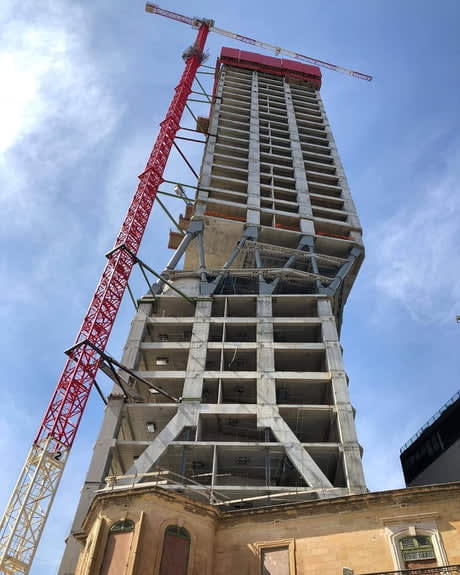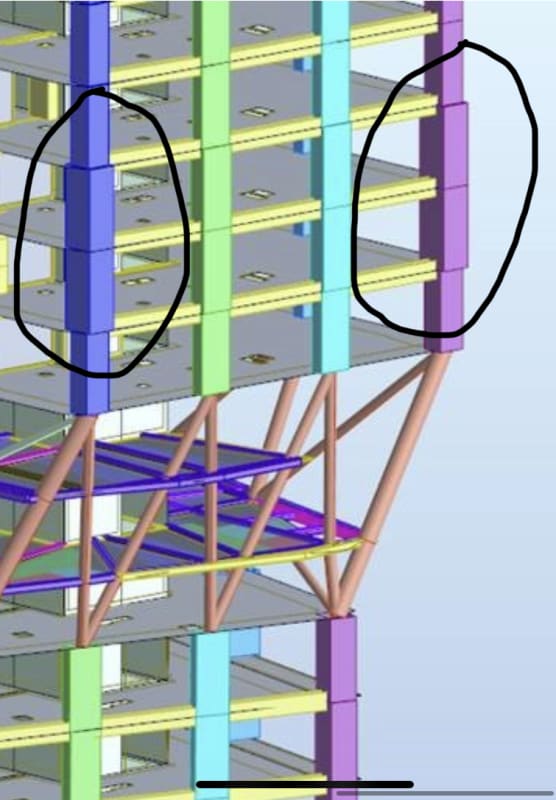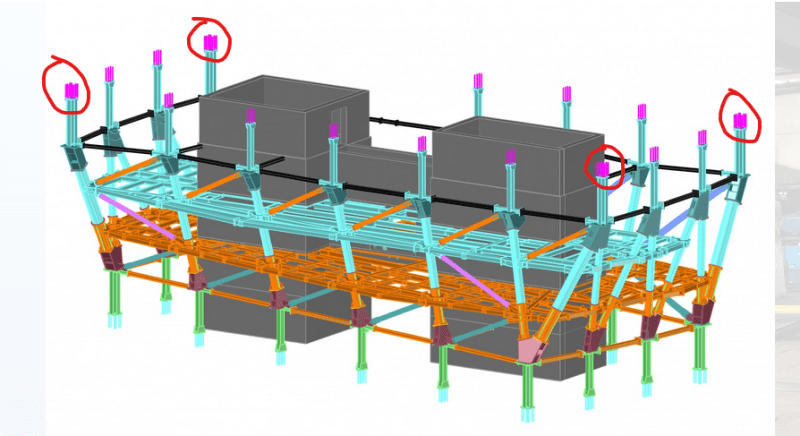-
1
- #1
MIStructE_IRE
Structural
- Sep 23, 2018
- 816
This is an amazing structure no doubt.
I’m not sure I’d have the cojones for it!!
Malta seems to be relatively low in terms of seismic activity and I guess a very stiff central core would take care of any torsion etc.. But still.. I think I’ve realised the limits of my engineering bravery!
In terms of redundancy... I’m guessing that steel ‘truss’ can span two bays if you lose one of the raking struts at the lower transfer level. If you lose a truss diagonal however I’m not sure what happens. Would love to hear others thoughts on progressive collapse.

I’m not sure I’d have the cojones for it!!
Malta seems to be relatively low in terms of seismic activity and I guess a very stiff central core would take care of any torsion etc.. But still.. I think I’ve realised the limits of my engineering bravery!
In terms of redundancy... I’m guessing that steel ‘truss’ can span two bays if you lose one of the raking struts at the lower transfer level. If you lose a truss diagonal however I’m not sure what happens. Would love to hear others thoughts on progressive collapse.



